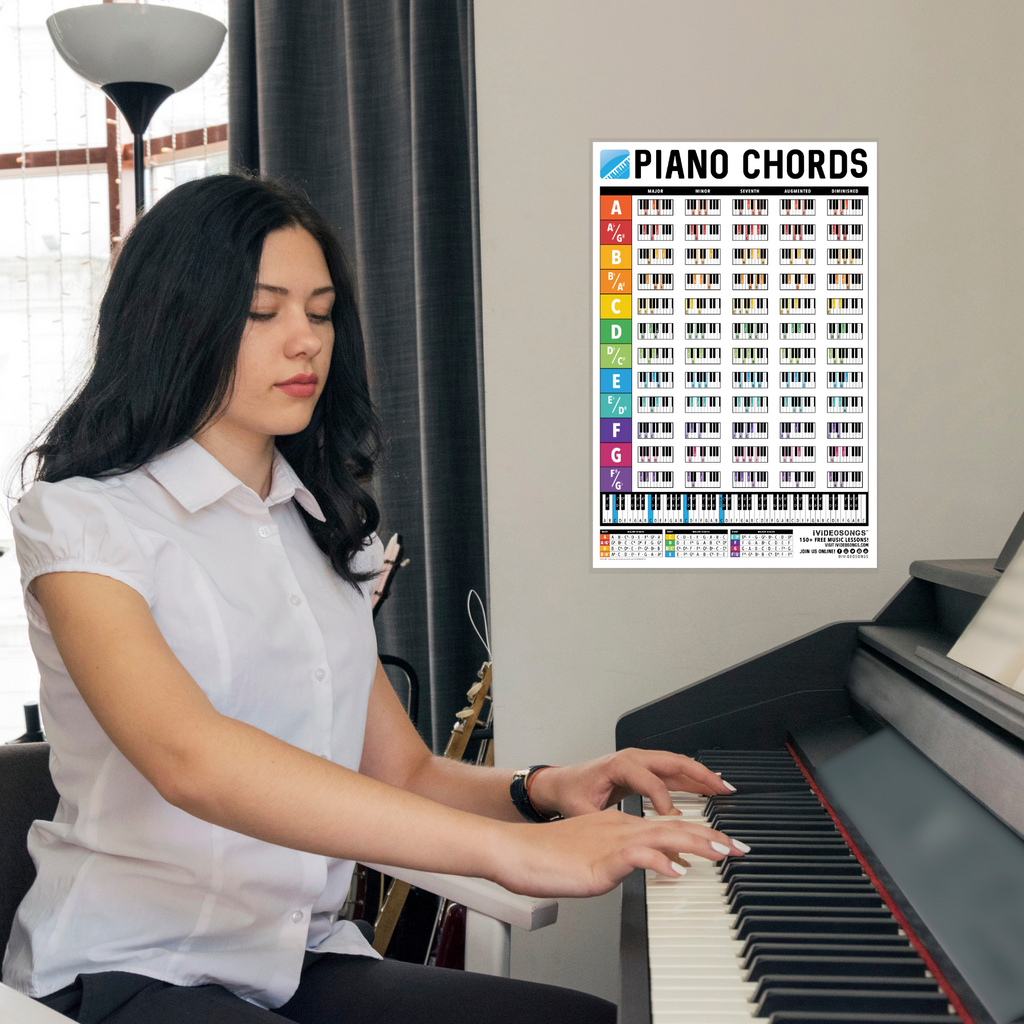If you’re just starting off to learn how to play piano—or coming back to piano—there are simple things you can do to get yourself going on piano.
No one really wants to plunk along at nursery rhymes. Too simplistic of music may set you back or turn you off.
Learning to play popular songs is more likely to keep you or your piano students interested in the keyboard. Here’s some basics, so you have a place to begin…or begin again.
ESSENTIAL SKILLS FOR PIANO PLAYERS
- Finger independence
Learn how to re-gear your brain, so that each hand can operate solo while playing. With piano, the left hand plays differently than the right hand. Likewise, playing separate notes with each finger is pretty much essential for success.
To press down fingers independently without other fingers plunking a note next to it is called “finger independence.” Songs with 3 or 4 chords and simple melody lines should top your list when looking for how to start your own repertoire.
- Piano Scales
Everyone knows, piano scales are critical to learning the keyboard learning. But practice isn't terribly exciting news to anyone.
It would be an easier slide into first base if you were incorporate scales while trying to learn a song. Look for songs with melodies that have little runs up and down a major or minor scale. Now you get immediate satisfaction, learning a song while getting acquainted with scales on the piano.
- Piano Triads
Triads are wonderful three-note chords made up of the root note, a fifth and a minor or major third down the middle. When playing triads, you are learning a basic version of most any chord or even song there may be out there. When approaching a new song, seek a tune that contains just a few chords. You can boil those chords down to triads—abbreviations of chords—as you learn finger independence. Later, you can expand into the full-blown chords…
- Major and minor piano chords
Songs that combine major and minor piano chords teach you how to switch between the shapes of major and minor chords. You learn muscle memory and learn how both versions can change the nuance of sound and mood in a song’s chord progression.
- Inversions
Inversions are chords with the notes played in a differing order. Your root position is the root note of the chord at the bottom or lowest pitch—to your left on the keyboard. A first inversion is the third at the bottom and the root at the top. The second inversion puts the fifth at the bottom and third at the top. Inversions help you string chords together. Your hand movement is less dramatic when playing a progression.
- Arpeggios
Arpeggios are the notes of a chord being spread out and played each by itself. This is a kind of run, moving up or down the keyboard—often through several octaves. Arpeggios are great for development of your finger dexterity while increasing your comfort level with notes in a chord…and where they lay up and down the keyboard.
- Timing and rhythm
Timing can become problem #1 for beginners. Many know what a metronome is—tick-tocking to keep you to a steady beat. Your keyboard regime must entail a solid sense of timing. The metronome helps stay in time, but if you have an electronic keyboard, most have programmed beats for accompaniment. Either way, you can vary the playback speed or tempo to make it easier to play with solid timing. Speed up as your skills grow.
When it comes to what songs and how to play them, start with simple breakdowns, like with triads, to zero in on the chords and flow of the arrangement.
The main thing when choosing a song to learn is that it’s one you like and will be fun to play. It is kind of like picking out a jigsaw puzzle: you look for one where the big picture motivates you all by itself.


Comments (0)